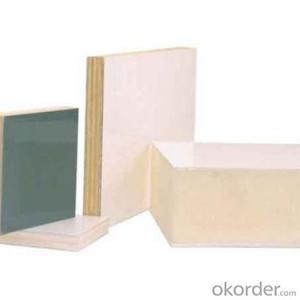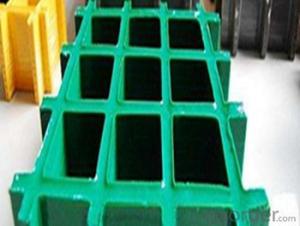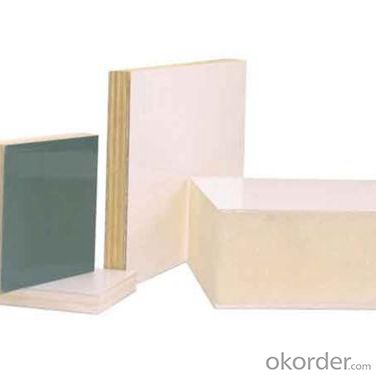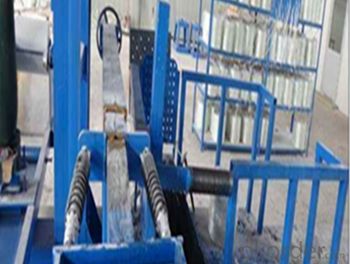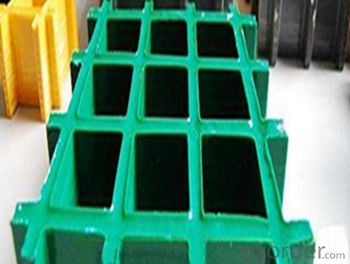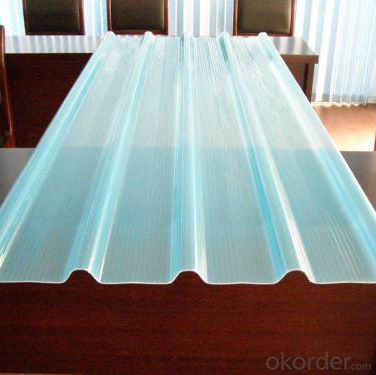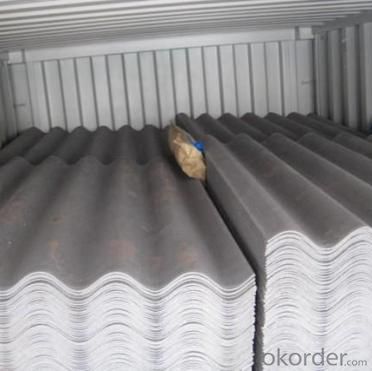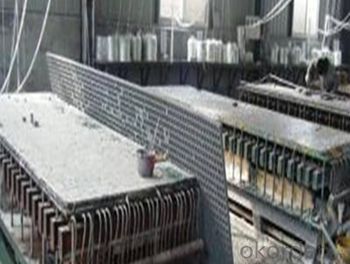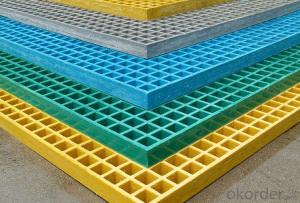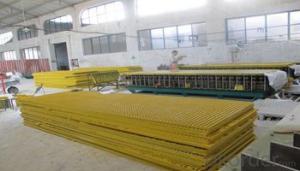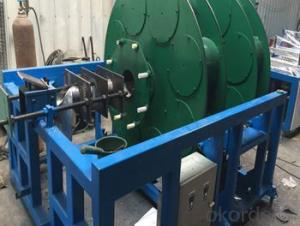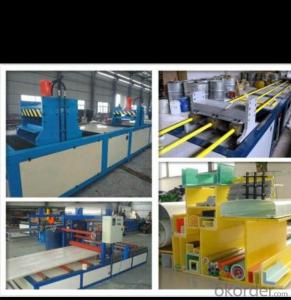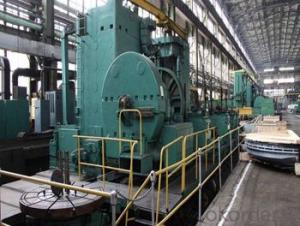FRP Pultrusion Profiles - Lightweight, High Strength FRP Pultruded Grating with Good Quality
- Loading Port:
- Tianjin
- Payment Terms:
- TT OR LC
- Min Order Qty:
- 20000 m.t.
- Supply Capability:
- 500000 m.t./month
OKorder Service Pledge
OKorder Financial Service
You Might Also Like
Specification
PRODUCT DESCRIPTION
Pultruded grating is made by a particular assembly process, which using “I” shape as its main load-bearing and special rod to go through the bearing bar. Pultruded grating include the standard grating and the custom grating, the custom grating can be designed to meet customer’s requirement or special using condition by changing the shape, size and space of the bearing bars, the surface can be covered with lozenge panel, grit panel, or added the anti-slippery sand directly.
FRP pultruded grating has the most characteristics of molded grating, but it has its distinct advantages, it has very high fiberglass content in the loading direction, so it has very high load capability, it has more superiority when used at wide span, so that the basic support will be decreased and the project cost will be reduced accordingly.
SPECIFICATION
The standard space between two crossbars is 6 inch or 12 inch.
Thickness (mm) | Bar width (mm) | Open space (mm) | Open rate (%) | Approx weight (kg/m |
25.4 | 15.2 | 22.8 | 60 | 13.2 |
25.4 | 15.2 | 15.2 | 50 | 15.9 |
25.4 | 15.2 | 10.1 | 40 | 18.5 |
25.4 | 40 | 10.8 | 21 | 14.5 |
38.1 | 15.2 | 22.8 | 60 | 15.8 |
38.1 | 15.2 | 15.2 | 50 | 19.1 |
38.1 | 15.2 | 10.1 | 40 | 22.4 |
50.8 | 25.4 | 25.4 | 50 | 16.6 |
50.8 | 25.4 | 12.7 | 33 | 21.1 |
CHOICE FOR PULTRUDED GRATING
Resin: GP resin, ISO resin, VE resin, Phenol resin
Color choice: Yellow, gray, green, custom color
Surface choice: Groove surface, grit surface, lozenge cover surface
FEATURES
a. Anti-corrosion and anti-rust
b. Light weight and high strength
c. Anti-flammable
d. Anti- fatigue
e. Safe and anti-slippery
f. Anti-ageing
g. Easy of maintenance
h. Excellent electromagnetism property
i. Good economic benefit
FIELDS SERVED
Sewage treatment,
water supply and drainage,
chemical industry,
oil industry,
power engineering,
pulp and paper,
construction engineering,
spinning, marine engineering.
APPLICATION
Operation terrace,
stair walkway,
ground floor,
trench cover,
sidewalk,
foot bridge,
equipment safety fence,
scaffold.
COMPANT DESCRIPTION
CNBM,China National Building Materials Group is a state-owned enterprise in charge of administrative affairs in china building materials industry. Established in 1984, CNBM is a large group corporation of building materials with total assets of 25 billion RMB and a total staff of 30,000.CNBM now owns 200 subordinating firms of solely owned and joint-venture companies.
CNBM International Corporation is one subsidiary of CNBM, we focus on offering good-quality products,professional service and complete solution to our customers. Strong delivery capacity, advanced technology& management, strong financing capability and excellent after-sale service are our advantages in sharing international market.
FAQ
Q1.What's your sample policy?
A:We can supply the sample if we have ready parts in stock, but the customers have to pay the courier cost.
Q2.Can you produce according to the samples?
A: Yes, we can produce or modify the products according to your request.
Q3.How do you deliver the goods to my country?
A:We can provide international express, such as DHL, EMS, UPS, FedEx, etc. We select air freight and sea freight upon your requests. Quotations if without mentioning the shipping costs are shipping fee excluded.
Q4.How much does it cost to ship to my country?
A:When you goanna to place an order, please contact us, because different country has different freight.
Q5.How to get the catalogue?
A:please contact us and tell us what you are looking for.
We will try our best to meet customers' demands. Welcome you come here to visit us. We sincerely welcome partners around the world to establish business cooperation with us on the basis of mutual trust, benefit and development.
PICTURES
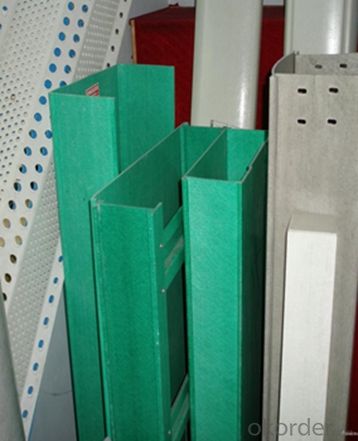
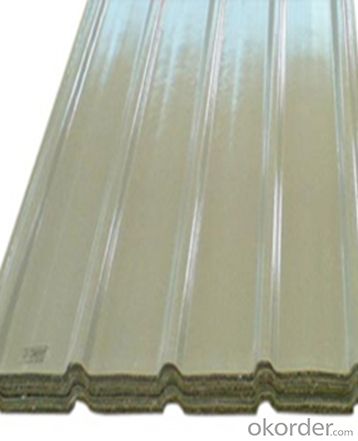
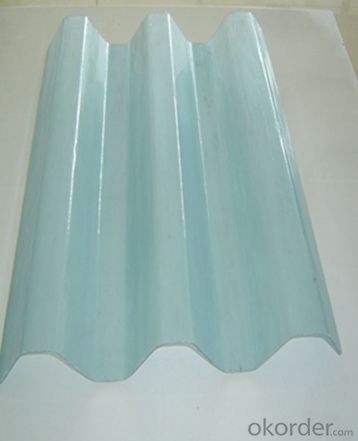
- Q: Can FRP pultrusion profiles be used in the construction of water slides?
- Yes, FRP pultrusion profiles can be used in the construction of water slides. FRP, or fiberglass reinforced plastic, offers excellent strength, durability, and corrosion resistance, making it a suitable material for water slide components. The pultrusion process allows for the production of customized profiles with specific shapes and dimensions, ensuring compatibility with water slide design requirements. Additionally, FRP's lightweight nature simplifies installation and maintenance while providing a safe and enjoyable experience for water slide users.
- Q: Are FRP pultrusion profiles resistant to saltwater corrosion?
- Yes, FRP pultrusion profiles are highly resistant to saltwater corrosion. The combination of their fiberglass reinforcement and the corrosion-resistant resin matrix used in their manufacturing make them ideal for applications in marine environments. They are capable of withstanding prolonged exposure to saltwater without degradation or loss of structural integrity.
- Q: Will the FRP section crack for a long time?
- Under normal circumstances, glass fiber reinforced plastic profiles will not appear cracking phenomenon, if there is cracking phenomenon, may be the following reasons:1, the placement method is incorrect, such as irregular, non closed section of a large number of stacked2 、 the resin content in the profile is low, filling is more (see if the section color is whiter, and more powder fall off at the same time)
- Q: Are FRP pultrusion profiles resistant to impact from flying debris?
- FRP (Fiber Reinforced Polymer) pultrusion profiles are known for their high strength and durability. They are generally resistant to impact from flying debris due to their inherent properties. The combination of the reinforcing fibers, typically made of fiberglass, and the polymer matrix provides excellent impact resistance. The specific resistance to impact from flying debris can vary depending on the specific design, thickness, and composition of the FRP pultrusion profiles. However, in most cases, these profiles are designed to withstand impact forces and can effectively resist damage caused by flying debris. Furthermore, FRP pultrusion profiles are often used in applications where impact resistance is crucial, such as in construction, transportation, and infrastructure industries. These profiles have been tested and proven to withstand various impact scenarios, making them a reliable choice for applications where flying debris is a concern. It is important to note that while FRP pultrusion profiles offer good impact resistance, the severity of the impact and the velocity of the flying debris can still affect the level of damage. Therefore, it is advisable to consult with the manufacturer or engineer to ensure the specific FRP profile chosen is suitable for the intended application and potential impact conditions.
- Q: Can FRP pultrusion profiles be used in cooling towers?
- Yes, FRP pultrusion profiles can indeed be used in cooling towers. FRP (Fiber Reinforced Polymer) pultrusion profiles offer excellent corrosion resistance, lightweight construction, and high strength, making them ideal for cooling tower applications. These profiles can withstand the harsh environmental conditions typically found in cooling towers, such as exposure to chemicals, moisture, and temperature variations. Additionally, FRP pultrusion profiles are easy to install, require minimal maintenance, and have a long service life, making them a cost-effective choice for cooling tower construction.
- Q: Are FRP pultrusion profiles resistant to chemicals used in chemical plants?
- FRP pultrusion profiles exhibit a general resistance to a wide range of chemicals employed in chemical plants. Their exceptional chemical resistance properties make FRP materials appropriate for diverse industrial applications, including chemical plants. The pultruded FRP profiles are manufactured by saturating reinforcing fibers with a thermosetting resin, such as polyester, vinylester, or epoxy. The selection of these resins is based on their resistance to various chemicals and can be tailored to meet specific requirements. FRP pultrusion profiles have demonstrated their ability to withstand aggressive chemicals, including acids, bases, solvents, and corrosive gases. Most common chemicals found in chemical plants, such as sulfuric acid, hydrochloric acid, nitric acid, and sodium hydroxide, typically do not affect them. Nevertheless, it is important to consider that the resistance of FRP pultrusion profiles may vary depending on the specific resin system, as well as the concentration and temperature of the chemicals involved. To ensure the suitability of the chosen FRP profiles for the chemical environment in a chemical plant, it is always advisable to consult with the manufacturer or supplier.
- Q: What are the limitations of FRP pultrusion profiles?
- There are several limitations associated with FRP (Fiber Reinforced Polymer) pultrusion profiles. 1. Limited Shapes and Sizes: Pultrusion technology is primarily suitable for producing linear profiles with constant cross-sections. It is challenging to create complex shapes or profiles with varying cross-sections using this manufacturing process. 2. High Initial Costs: The initial setup costs for pultrusion equipment can be quite high, making it less economically viable for smaller production runs. The machinery and molds required for pultrusion can be expensive and may require significant investment. 3. Limited Material Choices: While FRP pultrusion profiles offer excellent strength and corrosion resistance, the range of materials available for pultrusion is relatively limited. Typically, only a few types of reinforcing fibers, such as glass or carbon, are used. This limitation restricts the range of properties and applications of pultruded profiles. 4. Surface Finish: Pultruded profiles often have a rough surface finish, which may not be suitable for certain applications where a smooth or aesthetically pleasing appearance is desired. Additional steps, such as post-processing or coating, may be required to achieve the desired surface finish. 5. Tolerance Control: Maintaining tight dimensional tolerances can be challenging in pultrusion due to the inherent nature of the process. Variations in resin flow, fiber distribution, and curing can affect the final dimensions of the profile, which may require additional quality control measures. 6. Limited Design Flexibility: Unlike traditional manufacturing methods like extrusion or injection molding, pultrusion offers limited design flexibility. The constant cross-section of pultruded profiles restricts the ability to incorporate intricate features or varying thicknesses in the design. 7. Brittle Behavior: FRP pultrusion profiles tend to exhibit brittle behavior when subjected to high impact or sudden loads. While they possess high strength and stiffness, they may not have the same toughness as other materials like metals, making them prone to fracture under certain conditions. Despite these limitations, FRP pultrusion profiles offer numerous advantages such as high strength-to-weight ratio, corrosion resistance, and design versatility within their limitations. These profiles find applications in industries such as construction, aerospace, automotive, and marine, where their unique properties outweigh the drawbacks.
- Q: Are FRP pultrusion profiles resistant to impact and vibration?
- Yes, FRP (Fiber Reinforced Polymer) pultrusion profiles are generally highly resistant to impact and vibration. The combination of resins and fibers used in FRP pultrusion manufacturing makes the profiles inherently strong and durable. The fibers, typically glass or carbon, provide high tensile strength, while the resin matrix offers additional toughness and resistance to impact. Due to their unique composition, FRP pultrusion profiles have excellent energy absorption properties, which allows them to withstand impacts without significant deformation or damage. This makes them suitable for applications where impact resistance is crucial, such as in construction, transportation, and infrastructure projects. Moreover, FRP pultrusion profiles exhibit remarkable resistance to vibration. The composite material's inherent damping characteristics help dissipate and dampen vibrations, reducing the risk of structural fatigue and increasing the longevity of the profiles. This vibration resistance makes FRP pultrusion profiles ideal for use in environments with high vibration levels, including industrial machinery, bridges, and marine structures. However, it is important to note that the specific impact and vibration resistance of FRP pultrusion profiles can vary depending on factors such as the type of resin used, the reinforcement fibers employed, and the design of the profile itself. Therefore, it is advisable to consult with the manufacturer or supplier to ensure that the chosen FRP pultrusion profiles meet the specific impact and vibration resistance requirements of the intended application.
- Q: Are FRP pultrusion profiles resistant to chemicals used in power plants?
- FRP pultrusion profiles are generally resistant to chemicals commonly used in power plants, such as acids, alkalis, solvents, and corrosive gases. These profiles possess excellent chemical resistance properties, which make them suitable for various industrial applications, including power plants. However, the level of chemical resistance may vary depending on the resin matrix and the specific chemicals to which they are exposed. To ensure that the FRP pultrusion profiles meet the chemical resistance requirements in a power plant environment, it is essential to consult with the manufacturer or supplier regarding the specific resin matrix and formulation used.
- Q: Can FRP pultrusion profiles be used in the construction of offshore platforms?
- FRP pultrusion profiles have the capability to be utilized in the construction of offshore platforms. These profiles possess a range of beneficial characteristics that render them appropriate for offshore applications. To begin with, FRP pultrusion profiles exhibit a combination of lightness and strength, which is vital for withstanding the harsh environmental conditions encountered by offshore platforms, such as strong winds, waves, and corrosive saltwater. The high strength-to-weight ratio of FRP makes it an optimal choice for reducing overall weight while preserving structural integrity. Moreover, FRP is exceptionally resistant to corrosion, unlike conventional construction materials like steel. This is particularly crucial in offshore environments where metal structures can rapidly corrode due to exposure to saltwater. FRP pultrusion profiles remain unaffected by rust or corrosion, resulting in extended service life and diminished maintenance costs. Additionally, FRP pultrusion profiles possess the capability to be designed and manufactured with exceptional fire resistance properties. This is of utmost importance for offshore platforms, as fire incidents can lead to catastrophic consequences. FRP materials can be engineered to satisfy specific fire safety standards, providing an additional layer of protection. Furthermore, FRP pultrusion profiles offer design flexibility, as they can be easily tailored to meet individual project requirements. This allows for the creation of intricate shapes and sizes, facilitating efficient construction and installation of offshore platforms. In conclusion, the lightweight, corrosion-resistant, fire-resistant, and customizable nature of FRP pultrusion profiles deems them an appropriate choice for constructing offshore platforms. They offer numerous advantages over traditional materials, contributing to enhanced safety, durability, and cost-effectiveness in offshore construction projects.
Send your message to us
FRP Pultrusion Profiles - Lightweight, High Strength FRP Pultruded Grating with Good Quality
- Loading Port:
- Tianjin
- Payment Terms:
- TT OR LC
- Min Order Qty:
- 20000 m.t.
- Supply Capability:
- 500000 m.t./month
OKorder Service Pledge
OKorder Financial Service
Similar products
Hot products
Hot Searches
Related keywords
